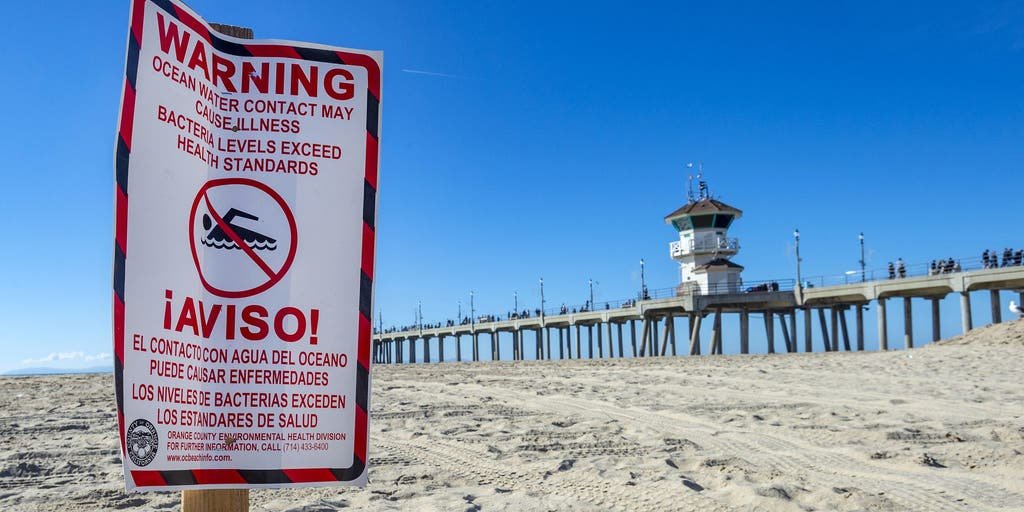Summer Beach Safety: Navigating Risks and Health Concerns
As the sun glints off the shimmering waves of Long Island’s beaches, a stark warning looms for eager vacationers: swimming advisories are becoming increasingly prevalent, casting a shadow on what is often perceived as a carefree summer escape. With reports of high bacteria levels in the waters stretching from Washington to New York, health officials are raising alarms about the hidden dangers lurking beneath the surface.
The Alarming State of Beach Water Quality
The recent surge of bacteria contaminations can be attributed to several factors, including storm runoff, which sweeps pollutants into coastal waters. “Heavy rain can flush contaminants into the ocean, leading to bacterial spikes that pose serious health risks,” explains Dr. Lauren Chen, a marine biologist at the University of Miami. “While enjoying the beach, many people remain unaware of the potential hazards as they dive in.”
Suffolk County, New York, has issued advisories at over a dozen beaches where swimming is discouraged. Meanwhile, nearly two dozen beaches in Massachusetts have been closed outright due to dangerously high bacteria levels. Michigan has observed similar precautions, with certain public beaches shuttered as a direct response to these health threats.
Health Risks Associated with Contaminated Water
Marine bacteria, especially when washed into swimming areas, can lead to a range of negative health impacts. According to studies conducted by the Centers for Disease Control and Prevention (CDC), these risks include:
- Gastrointestinal issues, such as diarrhea and stomach cramps
- Skin infections, which can develop from cuts or abrasions
- Respiratory problems from ingesting contaminated water
Dr. Sarah Whitaker, an epidemiologist at the CDC, noted, “It’s essential for beachgoers to remain vigilant, particularly in the summer when beach attendance peaks. Checking local water quality reports can make the difference between a fun day at the beach and a trip to the emergency room.”
Advice from Lifeguards and Experts
As advisories proliferate, lifeguards and local health officials are stepping up their education efforts. Cary Epstein, a lifeguard supervisor in Miami-Dade County, emphasizes the importance of proper hygiene after swimming. “If you’ve been in a potentially contaminated area, washing your hands thoroughly is crucial. It only takes a couple of minutes but can prevent severe illness,” he advises.
Experts also recommend the following precautionary measures:
- Always check online beach reports for real-time updates on water quality.
- Avoid swimming for at least 48 hours after heavy rainfall.
- Keep open wounds covered and avoid swallowing water while swimming.
The conversation around water safety brings to light not just the immediate dangers of contaminated beaches but also the broader environmental issue of water pollution increasingly impacting public health. A recent study published in the Journal of Coastal Research highlighted a direct correlation between urban runoff and elevated bacteria levels in popular swim zones.
Emerging Threats: Sargassum and Toxic Algae
In addition to bacterial concerns, the rise of sargassum seaweed poses yet another challenge for beachgoers. Tropical regions, particularly in the Caribbean, are witnessing record levels of this brown seaweed washing ashore, clogging popular beaches and detracting from the allure of sunbathing and swimming. The accompanying foul odor can further diminish the experience for vacationers.
Dr. Camila Reyes, an environmental scientist specializing in marine ecology, warns, “Sargassum not only disrupts tourism but can also release toxins into the water as it decomposes. This can compound the risks already associated with bacterial contamination.”
Efforts to mitigate this issue are underway, with some coastal communities investing in cleanup efforts and education about the potential dangers of sargassum. However, the challenge requires sustained collaboration between local governments, environmental organizations, and health authorities.
Protecting Public Health through Community Awareness
As swimming season approaches its peak, beach safety remains an urgent concern for health officials and community leaders. The potential for human illness due to contaminated waters necessitates a proactive approach, rooted in community education and transparency. “People have the right to enjoy their local beaches, but education about these hidden dangers is paramount,” asserts Dr. Whitaker.
The rise in health advisories serves as a call to action, urging both residents and tourists to stay informed about beach conditions and adhere to safety recommendations. As summer unfolds, the delicate balance of enjoying the soothing waves and safeguarding health remains a pressing challenge, one that requires vigilance, communication, and proactive measures from all involved.









